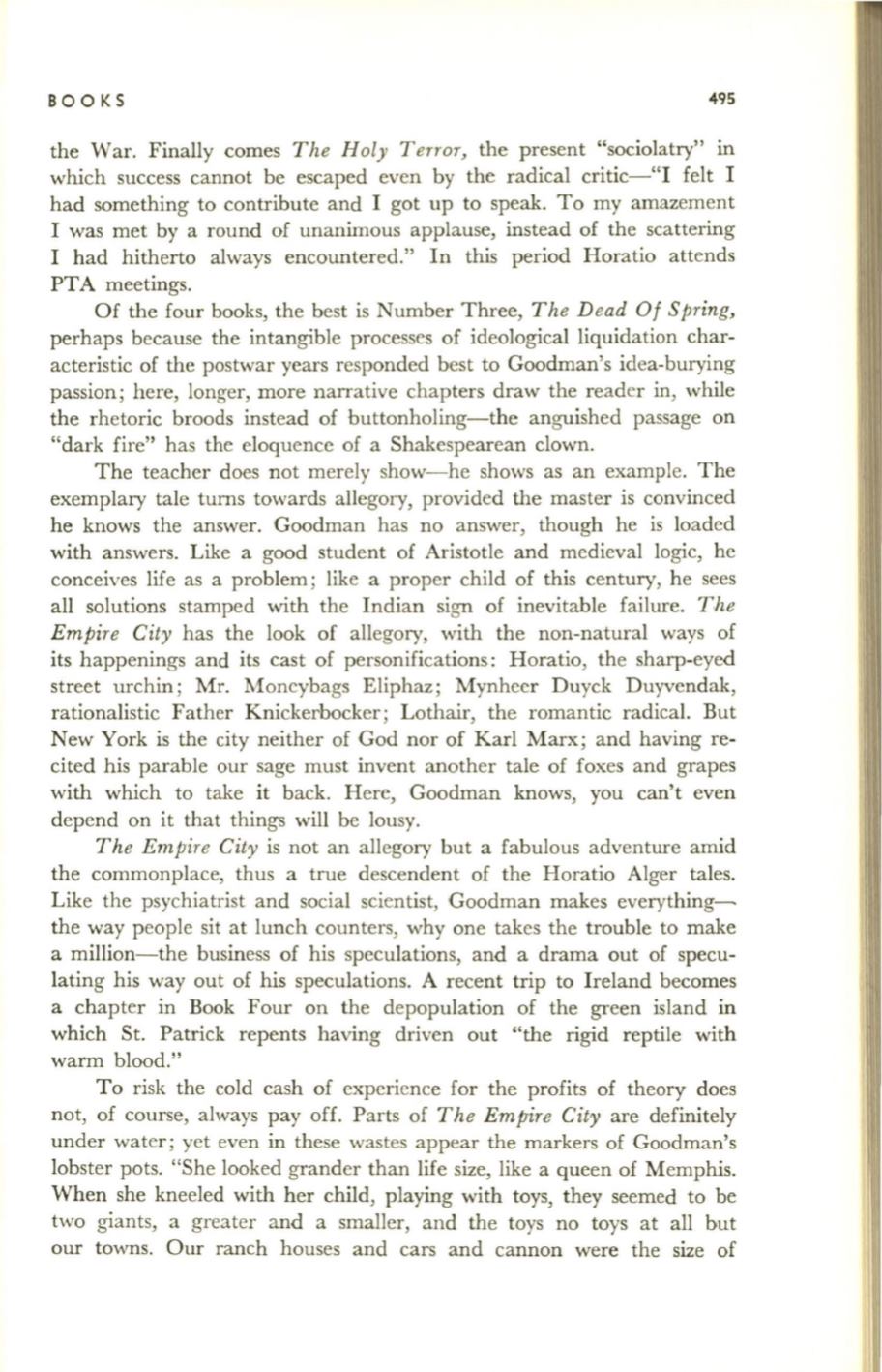
BOO KS
495
the War. Finally comes
The Holy T error,
the present "sociolatry" in
which success cannot be escaped even by the radical critic-"I felt I
had something to contribute and I got up to speak. To my amazement
I was met by a round of unanimous applause, instead of the scattering
I had hitherto always encountered." In this period Horatio attends
PTA meetings.
Of the four books, the best is Number Three,
The Dead Of Spring,
perhaps because the intangible processes of ideological liquidation char–
acteristic of the postwar years responded best to Goodman's idea-burying
passion; here, longer, more narrative chapters draw the reader in, while
the rhetoric broods instead of buttonholing-the anguished passage on
"dark fire" has the eloquence of a Shakespearean clown.
The teacher does not merely show- he shows as an example. The
exemplary tale turns towards allegory, provided the master is convinced
he knows the answer. Goodman has no answer, though he is loaded
with answers. Like a good student of Aristotle and medieval logic, he
conceives life as a problem; like a proper child of this century, he sees
all solutions stamped with the Indian sign of inevitable failure.
The
Empire City
has the look of allegory, with the non-natural ways of
its happenings and its cast of personifications: Horatio, the sharp-eyed
street urchin; Mr. Moneybags Eliphaz; Mynheer Duyck Duyvendak,
rationalistic Father Knickerbocker; Lothair, the romantic radical. But
New York is the city neither of God nor of Karl Marx; and having re–
cited his parable our sage must invent another tale of foxes and grapes
with which to take it back. Here, Goodman knows, you can't even
depend on it that things will be lousy.
The Empire City
is not an allegory but a fabulous adventure amid
the commonplace, thus a true descendent of the Horatio Alger tales.
Like the psychiatrist and social scientist, Goodman makes everything–
the way people sit at lunch counters, why one takes the trouble to make
a million-the business of his speculations, and a drama out of specu–
lating his way out of his speculations. A recent trip to Ireland becomes
a chapter in Book Four on the depopulation of the green island in
which St. Patrick repents having driven out "the rigid reptile with
warm blood."
To risk the cold cash of experience for the profits of theory does
not, of course, always payoff. Parts of
The Empire City
are definitely
under water; yet even in these wastes appear the markers of Goodman's
lobster pots. "She looked grander than life size, like a queen of Memphis.
When she kneeled with her child, playing with toys, they seemed to be
two giants, a greater and a smaller, and the toys no toys at all but
our towns. Our ranch houses and cars and cannon were the size of


